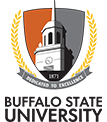What are Learning Outcomes?
Learning outcomes are clear, concise statements that describe what students are expected to know, do, or value as a result of engaging in a specific learning experience. They focus on the measurable skills, knowledge, attitudes, or behaviors that learners should demonstrate throughout, and upon completion of, their employment with Student Leadership & Engagement.
Key Characteristics of Learning Outcomes:
- Student-Centered: Focus on what the student will achieve.
- Specific and Measurable: Use action verbs to articulate observable or demonstrable outcomes.
- Aligned with Goals: Connect to broader educational goals, institutional mission, or accreditation standards.
- Relevant and Realistic: Reflect meaningful and achievable expectations for the context of being a Student Leader with Student Leadership & Engagement.
Learning Outcomes
- Greek Organization Compliance: Students will demonstrate an understanding of the recognition process for Greek Life organizations at Buffalo State University, including the criteria for both provisional and full recognition and the requirements for maintaining recognition.
- Membership Eligibility and Standards: Students will articulate the criteria for membership, including academic standing, participation in recruitment activities, and understanding of Greek Life responsibilities and expectations.
- Community Engagement and Service: Students will engage in community service, campus events, and collaborative activities, reflecting the Greek Achievement Program's focus on community and civic engagement, as well as organizational excellence.
- Risk Management and Accountability: Students will recognize the importance of risk management, including anti-hazing policies, and demonstrate accountability through compliance with University rules, regulations, and guidelines for behavior.
- Leadership and Organizational Excellence: Students will demonstrate leadership skills by participating in their Greek Life organizations’ executive functions and upholding organizational standards in academic excellence, harm reduction, and community engagement.
- Ethical Standards and Social Justice: Students will incorporate the principles of social justice and inclusion in their personal and organizational practices, demonstrating their understanding of diversity, equity, and inclusion within Greek organizations.
Alignment to Middle States Standards
- Standard I: Mission and Goals: The Greek Life Recognition Policy supports the institution's mission by fostering leadership, community engagement, and academic success, ensuring that the recognition process aligns with Buffalo State University's overarching goals.
- Standard II: Ethics and Integrity: The policy emphasizes ethical standards, including anti-hazing, diversity, and accountability, ensuring that Greek Life organizations uphold university policies in a transparent and responsible manner.
- Standard III: Design and Delivery of the Student Learning Experience: The policy provides structured opportunities for student learning, including leadership development, community service, and personal growth, in alignment with the university's academic and co-curricular offerings.
- Standard IV: Support of the Student Experience: Greek Life organizations are supported by campus resources to ensure student success through academic support, leadership programs, and community engagement.
- Standard V: Educational Effectiveness Assessment: The policy emphasizes the importance of regular assessment to improve the effectiveness of Greek Life programs and to ensure alignment with university goals.
- Standard VI: Planning, Resources, and Institutional Improvement: Resources for Greek Life programs are allocated based on assessment findings, contributing to continuous improvement and alignment with strategic goals.
Alignment to CAS Standards
- Standard I: Mission and Goals
The Greek Life Recognition Policy is aligned with the institution's mission, which focuses on promoting student engagement, leadership, and academic success. It provides a structured framework for Greek organizations to operate, contributing to the mission of Student Leadership and Engagement.
- Standard II: Program and Services
The policy supports the comprehensive development of students by providing Greek organizations with resources and guidance necessary for their operations. This ensures that Greek Life organizations serve the educational and developmental needs of students, supporting their holistic growth.
- Standard III: Student Learning, Development, and Success
Greek organizations are expected to provide structured opportunities for students to develop leadership skills, engage in community service, and uphold academic excellence. These activities foster students' personal and academic growth, directly supporting their learning and development outcomes.
- Standard IV: Assessment
The policy incorporates assessments such as the Greek Achievement Program to evaluate organizational performance and ensure that Greek organizations meet their educational goals. This systematic evaluation supports continuous improvement and development.
- Standard VI: Leadership, Management, and Supervision
The policy emphasizes the importance of effective leadership within Greek organizations, with clear roles for advisors and student leaders. This ensures that organizations are well-managed and that leadership development opportunities are provided to students.
- Standard VIII: Collaboration and Communication
The policy encourages collaboration between Greek organizations and Student Leadership & Engagement, ensuring that communication between organizations and institutional stakeholders is clear and productive.
- Standard IX: Ethics, Law, and Policy
The policy ensures that Greek organizations adhere to ethical guidelines, University policies, and legal standards, promoting responsible and ethical behavior in all organizational activities.
- Standard XII: Facilities and Infrastructure
Greek organizations are provided with access to University facilities, ensuring that their activities are supported by safe, accessible, and sufficient spaces.

